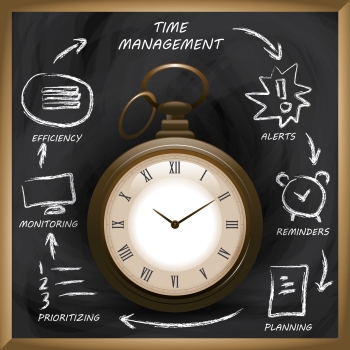Wed, 30 November 2016
Good news. Joanna’s back with a new book called Hack Your Habits and in this episode of the Magnetic Memory Method Podcast, we’ve got her here to talk about it. As always, I’ve got the interview transcript for you below and would love to hear your comments and questions in the discussion area below. Enjoy!
Why You Don’t Have To Have It All Mapped Out |
Wed, 23 November 2016
Here’s something even cooler: As a student of the Magnetic Memory Method, it’s easy to encounter a new Chinese poem just once and memorize it with a high level of recall. We’re talking 92-95% accuracy after 24 hours, with 98-100% accuracy thereafter using MMM Recall Rehearsal. And the best part is:
Each Poem Is Easier To Memorize Than The Last!
So by now you’re probably asking … How does the Magnetic Memory Method work for memorizing Chinese poems? And how can I do it too? I’m glad you asked because the steps are clear, crisp, clever and concise.
1. Get some Chinese poems (Duh!)
In this regard, I’m the luckiest man on the planet. I’m married to a woman who knows a bunch of Chinese poems by heart. But even if you don’t have a Chinese speaker in your life, it’s easy to find someone using a learn languages online service. The important thing is to choose poems that are short, sweet and simple. This helps reduce the cognitive overload at the beginning. Songs work too. Like this one:
2. Have More Than One Memory Palace On Hand
It’s no secret that I teach the Memory Palace technique as a skill of multiples. One is the most dangerous number when it comes to memory, so make sure that: 1) You always have more than one Memory Palace ready to go. 2) You have the ability to create an impromptu Memory Palace on the fly. With these two abilities, you can either use a pre-existing Memory Palace or just whip one up on the spot. In this case, each of the Chinese poems I’ve learned are only four lines each. I used a new Memory Palace for each. I created the first two Memory Palaces on the fly, one in a hotel room, the other in an AirBnB. The third was in my current kitchen, a Memory Palace I’ve been using and reusing for Chinese since I started learning the language.
3. Create Your Associative-Imagery |
Sat, 12 November 2016
But for some reason, when times get tough, without knowing a thing about the Prime Ministers of Canada, people around the world throw up their hands and say, “It’s time to head to the Great White North.” Here’s the thing: You’ll find some beautiful terrain and plenty of peace-loving citizens. But as a nation, we do not lack our own host of colorful characters. So if you’re coming over for a permanent BBQ in response to US election results or some dictator who’s been giving you the squeeze, it’s time to learn how to memorize the Prime Ministers of Canada. It’s important to know what you’re getting into, after all.
Beginner’s Guide To Memorizing Any List
The first thing to understand when memorizing the names of the Canadian Prime Ministers is that you’re dealing with a list. We’re talking about discrete units of information. Like, Sir John A. Macdonald (1815-1891). The best way to rapidly memorize any list is to create a Memory Palace. All Memory Palace creation takes is a simple drawing and a list of your Magnetic Stations charted out in a strategic way. Creating an effective Memory Palace reduces your cognitive load to a bare minimum. That reduction forms a huge part of the secret behind how memory techniques like a Memory Palace work: You use a location you already know to place information you’ll Magnetically encode with imagery you already know onto a station so you can retrieve and decode what you want to know later. Curious about correct Memory Palace creation? Here’s a Memory Palace walkthrough based on a Memory Palace submitted by a Magnetic Memory Method student:
A Small Set Of Super Important Information
In this case, we have just 23 names for the Prime Ministers of Canada. When it comes to memorizing them, you have options. 1. You can create one Memory Palace with 23 Magnetic Stations exclusively for remembering them. 2. You can create two Memory Palaces with 12 Magnetic Stations each. In either case, you ‘ll ideally use Memory Palaces with more Magnetic Stations than you need so that you can use more than one station per name if needed. Or, if you’re already experienced with memory techniques, you can experiment with the Magnetic Memory Method “passing the baton” technique, which allows you to memorize more than one name per station. That’s for advanced memorizers, however, and even then, it’s good once in awhile to stick with the basics. And that’s ultimately what I recommend so that you can add the dates of the Prime Ministers later using the Magnetic Chaining memory technique.
The Art Of Embarrassing Politicians
Let’s assume you’ve got a Memory Palace with a bit more than 23 Magnetic Stations to give you wiggle room. Next, you need your list of information. The Wikipedia Prime Ministers of Canada page is as good as any. Whip that little darling open and look at the first name. The trick to memorizing anything is association, also called encoding. It’s easy, fun and with a bit of practice using special exercises I’ve created for you, unbelievably fast. John A. Macdonald, for example, brings to mind a picture of my friend and fellow mnemonist, John McPhedrine to mind. You’ve heard him on the show talking about memorizing German and music before. I see John at the first station of the Memory Palace I’ve created with a giant letter ‘A’ in his hands. He’s using this to smash my MACbook Pro, which is playing a video of Donald Trump singing “Old Macdonald Had A Farm.” Plus, as an advanced memorizer, I’ve got Trump’s hair as the tail of a dog swatting at a bat. Why? Because that additional imagery helps me remember the dates of this Canadian Prime Minister. How does that work? It sounds complex, but it’s actually simple: Using a special memory technique for memorizing numbers, 15 is “tail” and 91 is “bat.” I’ve got an entire course in the Magnetic Memory Method Masterclass about all the ways you can remember numbers, or you can just check out this post on the Major Method. It’s a great way to instantly memorize any number, and not just short ones like historical dates. The Prime Minister Who Built Walls |
Wed, 9 November 2016
Especially when you’re in a rush. Especially when all you want is the grade, the certification, the knowledge. Well, I can’t make any promises, but there might be a way to help make any topic much more interesting to you. At the very least, we can remove the sting of boredom. At best, we can make any topic we want 100% Magnetic. 1. Warning Signs That Your Mindset Is Off
I know, I know. You’re tired of hearing about mindset. But let’s face it. We have minds. Every day we wake up with more or less the same world outside the window. Just like we have to make our beds so that the sheets won’t be sprawled all over the place, we have to set up our minds for success. But that’s the problem, isn’t it? Lots of people are happy to leave their beds messy all day long and then crawl into the unkempt mess at night. It’s cold because the mattress has been exposed and probably a bunch of insects have settled into the dune-like patterns. Sure, you might fall asleep okay, but there’s nothing like slipping into a made bed. You know it’s true.
It’s The Same Thing With Your Mind!
Sure thing, you can get through life without setting up your mind for success, but it will be cold and exposed to the elements. The bugs will crawl in and lay their eggs, and you’ll never get the warmth you deserve. But take just a few moments to tidy up and you’ll reduce the suffering that comes from studying things you don’t like. Because that’s just the thing: A lack of mindset is probably the thing that got you into a position where you’re studying things you’re not passionate about in the first place. You’re probably studying material that produces no great excitement because you’re chasing after hopes and beliefs and dreams and wishes – not what you really want.
How To Set A Powerful Mindset For Learning
Whether you’re trapped or not, the process works the same. The best way to get your mindset in order is to set it each and every morning. As I talked about in the Mandarin Chinese Mnemonics And Morning Memory Secrets episode of the Magnetic Memory Method Podcast, having morning rituals is a killer way to conquer the day. When it comes to creating a mindset for making the material you’re studying vibrant and exciting, all you have to do is write down in a journal how exciting it is to be studying and how grateful you are to have the opportunity. And it’s true: Not everyone has the learning opportunities you do. A massive percentage of people in the world don’t have access to the Internet, schools, books or anything even remotely related to helping them develop their knowledge. But you …
You’ve Got Everything You Need
So take a moment every day to recognize what an amazing opportunity you have. If that isn’t a recipe for injecting excitement into a boring topic … I don’t know what is. If all else fails, here’s what to do if you or someone you love is considering not completing their high school diploma. They may have already left school, but it’s not too late to go back. I dropped out of high school myself for awhile, but I’m so glad I returned. Best decision of my life.
2. Be An Info-Completionist
Okay, so now that you’re plump with self-hypnosis induced excitement for the privilege of study, you still have to sit down and learn the stuff. The question is … How? A lot of people ask me how I manage to read so much, and the answer is simple: Get a book. Find a place to sit. Read the book. Repeat until you’re done. I don’t say that to be flippant, but it’s the truth. If you’re trying to read in a place filled with distractions or on a device that encourages you to skip from tab to tab and answer notifications …
Stop Trying To Read Like That!
Seriously. It’s not a recipe for success. Plus, you want to read in a way that helps you isolate the information you want to memorize. I have two posts with podcasts and videos that show you how to realistically memorize a textbook. Just check out the video for now: If you want more information, listen to How to Memorize A Textbook and study the infographic. True, my approach to realistically memorizing textbooks involves a bit of setup, but people who give it a try usually find that the process makes reading and remembering the key points of even the most difficult books much easier. The best part: By having a dedicated strategy for reading books, you make it a lot more fun. Like having a mindset, having a process you can follow without having to think about it makes everything more fun and interesting. Having operating principles and guidelines reduces cognitive load, and like Tony Buzan said when I studied with him, the rules set you free.
3. Look For The Parts That Do Interest You
One thing that you’ll learn from my training on (reasonable) textbook memorization is how to skip the parts that don’t interest you. No, you can’t always do this. There are times when you have to slog through boring stuff you don’t care about. But here’s the thing: by knowing what you do care about, you get more interested in things that connect with it. It happens automatically. And when interest doesn’t spontaneously erupt, you at least get a clearer picture of why those other elements are necessary. The more you know about a topic changes the nature of what you don’t know. It makes it more attractive, more Magnetic. And that which becomes more Magnetic is easier to attach to memory because you’re simply more interested in it. 4. Invite Information Into Your MemoryIn other words, use memory techniques. You knew this was coming, didn’t you? Let’s face it: The best way to make dry and boring information more interesting is to make it part of your memory improvement lifestyle. That means organizing the information so that you can rapidly absorb it into a Memory Palace. To do that, you get to invite the information into a place you’ve created in your mind. I don’t want to sound woo-woo, but there’s something ritualistic about this. It’s like anointing information, blessing it or touching its shoulder with the edge of your sword as if you were knighting it. Once anointed, you start looking at the information through mnemonic eyes. You’re looking for how you can attach it to associative-imagery and place these images on your Memory Palace stations. You’re already getting excited about revisiting your Magnetic Stations and decoding the imagery to ease it into long term memory. And before you know it … The information isn’t boring any more. Far from it! That information has become …
The Most Interesting Information In The World!
This is without a doubt the finest thing you can do for the life of your memory and overall intelligence. When you privilege information and stop demonizing it by framing it in negative ways, it will want to enter your mind. Even better: If you’ve invited the information in just the right way, it will want to stay.
5. Bore Others To Death With Your Boring Topic
Just kidding. By the time you’ve made the information interesting to yourself, you’ll be excited to talk about it and to do that, you should have something already in place: Community. Remember how I told you should be grateful for having the opportunity to learn in the first place? And how you can use your gratitude as a tool for generating excitement in even the most boring topic? Well, you also have the Internet and thousands of groups people have created for discussing topics that they either find really exciting, challenging or want to kvetch about. You can find these groups meeting on forums, on Facebook, G+ or just shooting the breeze in YouTube comments. Maybe there will be some interesting discussion on this video I put together to accompany this post, for example: Let’s say you’re studying cognitive therapy, something I’ve recently gotten interested in studying. The first thing is to show some gratitude for having the time and opportunity even to do so. Write that down in your daily gratitude journal. Then, hop on to Facebook and search for groups that are already discussing this topic. Ask to join. For example, you can ask to join my Learn German Memory Hacks group, or even the Magnetic Memory Method Private Facebook Group. Have fun once you’re inside! But Proceed With Caution!
Don’t overwhelm yourself with this. Just pick one or two that looks like it has enough members for finding a decent amount of discussion in process. Introduce yourself once you’ve been admitted. Tell them a bit about who you are and why you’re interested in the topic. Make friends with the group admins and shoot them a note to thank them for taking time to put the group together. Probably no one else is doing that so you’ll be on their radar and recognize your name later. Why would that matter? Easy. Because when you get bored or stuck somewhere in your reading, you have a place to go and post where at least a few people are going to know your name. Knowing that you have a place to go and share ideas in advance is a great way of making sure a topic never becomes boring to you. Of course, the dark side of this technique is that you’ll get swept away doing a thousand other things online, but we all need to learn how to balance these things. I’m writing this post now in a library where getting online is too much of a pain – deliberately so that I have no distractions. Because here’s the core of the matter:
If You Really Want To Get Ahead, You Will Find A Way
And with that monster of a headline, we’ve circled back to mindset, something you can get started crafting or refining right now. Exciting, isn’t it? Now get out there and tackle some uninteresting information you using these tools. I dare you to be bored! Oh, and if you’re still skeptical, check out these 3 Reasons Why Skeptics Succeed With Memory Techniques Better Than Anyone Else. The post 5 Ways To Get More Interested In Boring Topics You Have To Study appeared first on Magnetic Memory Method - How to Memorize With A Memory Palace.
Direct download: 5_Ways_To_Get_More_Interested_In_Boring_Topics_You_Have_To_Study.mp3
Category:Podcast -- posted at: 4:58am EDT |
Thu, 3 November 2016
1. Art Inspires Your Visual Imagination
When you’re using memory techniques, you draw upon visual imagination. Even if you’re only using words in your mind when developing mnemonics, you’re using visual words. The more visual iconography you’ve seen in your life, the more potency the visual words you use will hold. Exposure equals experience. Experience leads to substance. When you use the words “run,” “hit” or any other verb, the more art you’ve seen, the great depth of meaning these words will have.
2. Art Depicts Words Used In Visual Ways
If you’ve been to an art gallery lately, you’ve undoubtedly seen how modern artists use words. Pop artists use comic strips. Futurists made a big deal out of typefaces. You don’t even have to enter an art gallery to see words used in graffiti on nearly every street in your city. Looking at art and paying attention to how artists use words is especially great for inspiring how you can use your visual imagination to memorize foreign language vocabulary and phrases. Next time you’re in an art gallery, pay particular attention to how words appear in the exhibits. 3. Art Helps You Make Mental Connections |
The Magnetic Memory Method Podcast

Categories
generalMemory Improvement Tools
Memory Method Tips
Brain Exercises for Memory Improvement
Memory Improvement Case Studies
Podcast
Guest Post
Memory Palace Tactics
Practical Memory Techniques
Uncategorized
Improve Memory Q&A
Archives
AprilMarch
February
January
December
November
October
September
August
July
June
May
April
March
February
January
December
November
October
September
August
July
June
May
April
March
February
January
December
November
October
September
August
July
June
May
April
March
February
January
December
November
October
September
August
July
June
May
April
March
February
January
December
November
October
September
August
June
May
April
March
February
January
December
November
October
September
August
July
June
May
April
March
February
January
December
November
October
September
August
July
June
May
April
March
February
January
December
November
October
September
August
July
June
May
April
March
February
January
December
November
October
September
August
July
June
May
April
March
February
January
December
November
October
September
August
July
June
May
April
March
February
January
December
November
September
| S | M | T | W | T | F | S |
|---|---|---|---|---|---|---|
| 1 | 2 | 3 | 4 | 5 | ||
| 6 | 7 | 8 | 9 | 10 | 11 | 12 |
| 13 | 14 | 15 | 16 | 17 | 18 | 19 |
| 20 | 21 | 22 | 23 | 24 | 25 | 26 |
| 27 | 28 | 29 | 30 | |||
Syndication

 Remember Joanna Jast and all those tips she gave you on
Remember Joanna Jast and all those tips she gave you on  Chinese poems thrill poetry fans around the world. They’ve been translated into umpteen languages and create wonderful images in the mind.
Chinese poems thrill poetry fans around the world. They’ve been translated into umpteen languages and create wonderful images in the mind.

 Life is good, isn’t it? You bet it is.
Life is good, isn’t it? You bet it is. Studying about boring topics you don’t give a hoot about sucks, right?
Studying about boring topics you don’t give a hoot about sucks, right? Want to improve your ability to use memory techniques almost overnight? I promise it’s super-easy. All you need is the willingness to support your nearest art gallery and your awareness of the following 17 reasons going to an art gallery is good for your memory.
Want to improve your ability to use memory techniques almost overnight? I promise it’s super-easy. All you need is the willingness to support your nearest art gallery and your awareness of the following 17 reasons going to an art gallery is good for your memory.